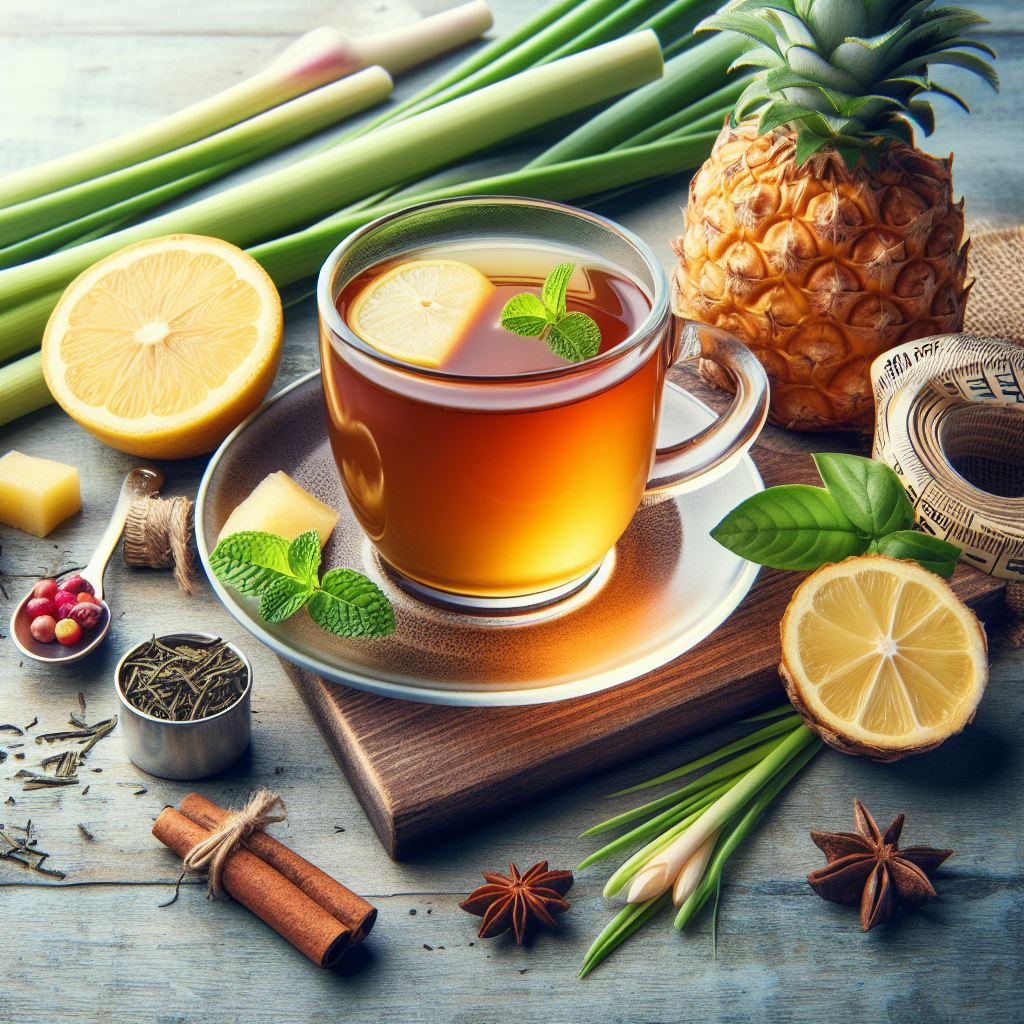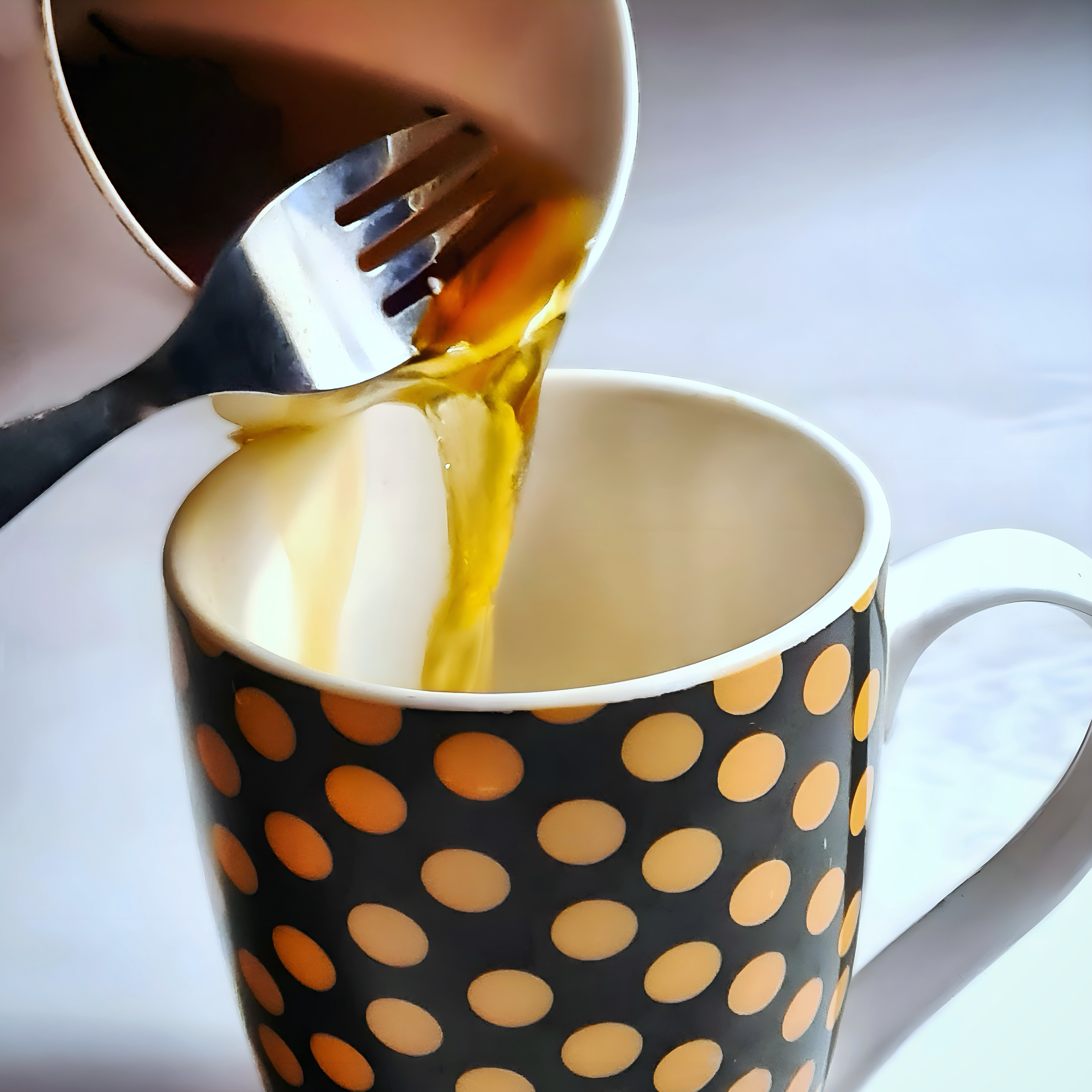If you’re looking for a new way to spice up your tea time, you might want to try adding some jam to your tea. Yes, you read that right! Jam is not only for spreading on toast or making sandwiches, but also for sweetening and flavoring your tea. Interestingly, this is a traditional practice in Russia, where tea is often served with a spoonful of fruit preserves.

The History of Tea with Jam
You might be wondering, when did this tradition begin? Well, tea with jam has been part of the Russian way of life for quite some time. Moreover, Russian tea culture dates all the way back to the 17th century, when tea was first introduced to Russia by the Mongols.
Since the introduction of tea in Russia, it quickly gained popularity as a prestigious drink amongst the Russian nobility and upper classes. They would usually enjoy it with sugar, honey, lemon, and spices. However, tea was also expensive and scarce, so the common people had to find cheaper and more accessible alternatives to sweeten their tea. That’s where jam came in!
Why Jam?
Jam quickly became a common accompaniment to tea, especially in the cold and harsh winters when fresh fruits were scarce and people needed something to warm up and boost their immune system. It was the perfect sweetener for a few reasons:
- Jam was very quick and easy to make by simply boiling fruits, berries, or vegetables with sugar and water.
- It was widely available and affordable, as people made it from their own gardens or foraged from the forests.
- Jam was also nutritious and tasty, and it preserved the natural vitamins and flavors of the fruits for very long periods of time. Perfect for storing over the cold Winters!
The Benefits of Tea with Jam
Tea with jam holds a place in the hearts of Russians, however, it is not only a historical and cultural tradition. You’ll be delighted to know, it also has some healthy and useful benefits when used with fresh jam. Here are some of the benefits you might find:
- It can enhance the flavor and aroma of your tea, without making it too sweet or overpowering. Jam can also add some texture and color, making it more appealing and satisfying.
- It can provide you with antioxidants, vitamins, minerals, and fiber, depending on the type of tea and jam you use. For example, green tea is rich in catechins, which can protect your cells from oxidative stress and inflammation. Raspberry jam is high in vitamin C, fibres, and antioxidants, which can support your immune system and skin health.
- It can help you relax and unwind, as they both have soothing and calming effects. Tea contains theanine, an amino acid that can promote mental clarity and relaxation. Jam can trigger the release of serotonin, a neurotransmitter that can regulate your mood and sleep.
Try our Lavender Chamomile Tea Recipe for the perfect relaxation ‘sleepy’ tea!
How to Make Tea with Jam
You wont be surprised to know that making tea with jam is a very simple process. Not only is it easy, but it’s also fun too! However, there are few different ways you can enjoy your Russian-inspired tea. You can experiment with different combinations of tea and jam, depending on your preference and availability. Below are some possible methods and tips to try:

1. Adding jam directly to tea:
The simplest way to make tea with jam is to add a spoonful of jam (preferably smooth & runny jam) to your hot tea and stir well until it dissolves. Try using any kind of tea, such as black tea, green tea, white tea, or herbal tea.
You can also use any kind of jam, such as cherry, raspberry, strawberry, apricot, or peach. Just adjust the amount of jam according to your taste and sweetness level. Additionally, it’s best to add the jam as soon as you’ve added the water to let both the tea and jam brew and infuse together.
2. Add jam to mouth and sip tea:
Another way to make tea with jam is to hold some jam in your mouth and sip the tea through it, letting the jam melt and mix with the tea. This can create a more intense and varied flavor experience, as you can taste the different layers of the ingredients.
You’ll find this method is also more interactive and playful, as you can enjoy the sensation of jam in your mouth. And if you want to most authentic Russian experience, apparently this is one the most common and traditional Russian methods.
3. Boiling jam with tea:
A third way to make tea with jam is to brew some tea with jam instead of water. This is done by adding some jam to a pot of boiling water and letting it simmer for a few minutes. Then, strain the tea and serve hot or cold.
This can create a more concentrated and fruity tea drink, which can be refreshing and invigorating. You can also add some lemon or herbs to your tea for extra taste and aroma.
4. Tea jelly:
A fourth way to make tea with jam is to make tea jelly. You can do this by combining brewed tea, jam, sugar, and pectin in a saucepan and bringing it to a boil. Then, pour the hot jelly into jars and process for 20 minutes.
You can enjoy the tea jelly on toast, crackers, or as a topping for ice cream or yogurt. You can also use the tea jelly to make tea sandwiches, cakes, or pies. Check out this simple tea jelly recipe for more info.
How to Choose the Right Jam
Now that you know the different methods to experiment with, you will need to choose the right jam! Obviously, not all jams are created equal, so some jams may work better with tea than others. You can take a look at this list of 57 jams, jellies, and spreads, to give you some inspiration! We’ve also included a list of useful factors to consider below:

1. The type of jam:
There are different types of jam, such as preserves, marmalades, jellies, and confitures. They all differ in their ingredients, texture, and consistency. It’s important which type of jam you choose, as it may affect how well it dissolves and blends with the liquid. Not only this, it can affect the flavor and aroma it adds to your tea.
- Preserves are made from whole or chopped fruits
- Marmalades are made from citrus fruits and peels
- Jellies are made from fruit juice and pectin
- Confitures are made from fruits and nuts.
2. The texture and consistency of the jam:
The texture and consistency of the jam are also important, as they may affect how easy or difficult it is to dissolve and mix the jam with your tea. Generally, you want to choose a jam that is smooth and runny, rather than thick and chunky. This will make it a lot easier to stir and melt in your tea.
You may also want to avoid jams that have seeds, peels, or other bits, since they may not be pleasant to drink or may clog your strainer or teapot.
3. The flavor and aroma of the jam:
The flavor and aroma of the jam are the most subjective and personal factors, as they depend on your taste buds and preferences. However, some general guidelines are to choose a jam that complements and balances the flavor and aroma of your tea, without overpowering or clashing with it. For example:
- If you are drinking a strong and malty tea, such as Assam or English Breakfast, you might want to pair it with a sweet and tangy jam, such as raspberry or orange.
- If you are drinking a light and floral tea, such as jasmine or chamomile, you might want to pair it with a delicate and subtle jam, such as peach or apricot.
The Best Jams to Put with Tea
There is no definitive answer to what are the best jams to put with tea, as it depends on your personal preference and taste buds. However, here are some general guidelines and suggestions to help you choose the best jams to put with tea:
- The best jams to put with tea are those that complement and balance the flavor and aroma of your tea.
- As we mentioned before, if you are drinking a strong and malty tea, such as Assam or English Breakfast, you might want to pair it with a sweet and tangy jam. If you are drinking a light and floral tea, such as jasmine or chamomile, you might want to pair it with a delicate and subtle jam. You can try experiment with different combinations and create your perfect recipe!
- Choose a jam that matches the season and mood of your tea time.
- For example, if you are drinking in the winter, you might want to choose a warm and cozy jam, such as apple or plum. If you are drinking in the summer, you might want to choose a cool and refreshing jam, such as lemon or mint.
Check out our list of the best Winter Christmas Teas – This Years Ultimate Guide to the Best Festive Teas.
- Choose jams that suit your dietary and health needs.
- If you are vegan or allergic to honey, you might want to avoid jams that contain honey or gelatin. Moreover, if you are diabetic or watching your sugar intake, you might want to opt for sugar-free or low-sugar jams. Likewise, if you are looking for organic or natural jams, try check the ingredients and labels of your jams.
Find out more about The Best Sweeteners for Tea: How to Find Your Sweet Spot.
Conclusion
Tea with jam is a wonderful way to enjoy your tea time. It can offer you a variety of flavors, benefits, and fun to change up your routine. This is known as a traditional practice in Russia, where tea is often sweetened and flavored with fruit preserves. As discussed before, this unique way of enjoying your tea can enhance the taste and aroma of your tea and provide you with antioxidants and vitamins. Not just this, it can also help you relax and unwind!
We hope you enjoyed this blog post and learned something new about tea with jam. If you want to try it yourself, make sure to source the higher quality teas and jams for the best experience. You can also share your thoughts and experiences in the comments section below!
Discover More Tea-Related Articles:
- Echinacea Tea: How to Brew and Enjoy This Floral Elixir
- How to Make Tea from Your Christmas Tree 🎄
- What Tea Has the Most Caffeine? The Answer Might Surprise You!
- Da Hong Pao Tea – The Most Expensive Tea in the World
- How to Make the Traditional Tea of Palestine – Shay bil Maramiya





Leave a Comment